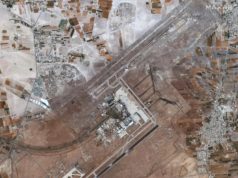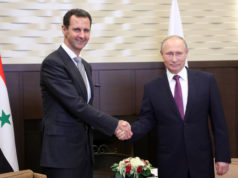The Syrian military has stated it will honor a ceasefire proposed by UN-Arab League special envoy Lakhdar Brahimi that will begin Friday and last four days during the Muslim holiday of Eid al-Adha. The decision came after notification yesterday by Syria that its military command was in deliberation and studying the proposal, during which Brahimi had prematurely declared Syrian support for the ceasefire.
The ceasefire will be extremely fragile moving forward. The military states that it “reserve[s] the right to reply to terrorists attacks, attempts of armed groups to reinforce or resupply, or attempts to infiltrate from neighbouring countries.” The plan also lacks a provision for international observation or monitoring, rendering enforcement non-existent. According to French ambassador to the UN, Gerard Araud, the Asad government must initiate the agreement by ending its shelling into civilian neighborhoods.

Syrians inspect damage in Aleppo’s Old City. (Photo: Miguel Medina/AFP/Getty Images) |
A similar deal in April brokered by the UN-Arab League envoy at that time, Kofi Annan, fell apart shortly after its implementation. So it is no surprise that some rebel groups reject the plan as impractical, and one that Asad will never follow. The Free Syrian Army, for its part, has stated that it will abide by the truce, but also demands that the regime release detainees by Friday and said it will not allow the regime to reinforce its positions.
Ahead of the deal, blood continues to be spilled. The last bakery in one Aleppo neighborhood was shelled Tuesday, resulting in the death of at least 20 people. Bakeries are a common target for the Asad regime. Both Tuesday and Wednesday saw more than 100 people killed each day, according to activists. And the violence continued into Thursday, with rebels claiming to have seized more than half of Aleppo — the city long fought over by the two sides. The estimated death toll stands at more than 34,000 since March 2011.
As in the past, it is hard to imagine that the ceasefire will take hold. If the fighting continues into Friday, both sides can easily blame the other for continued attacks as they stage attacks themselves — especially because there are so many disjointed rebel groups operating inside Syria against the regime. So if the truce doesn’t hold, the question remains: What will the international community do next?





